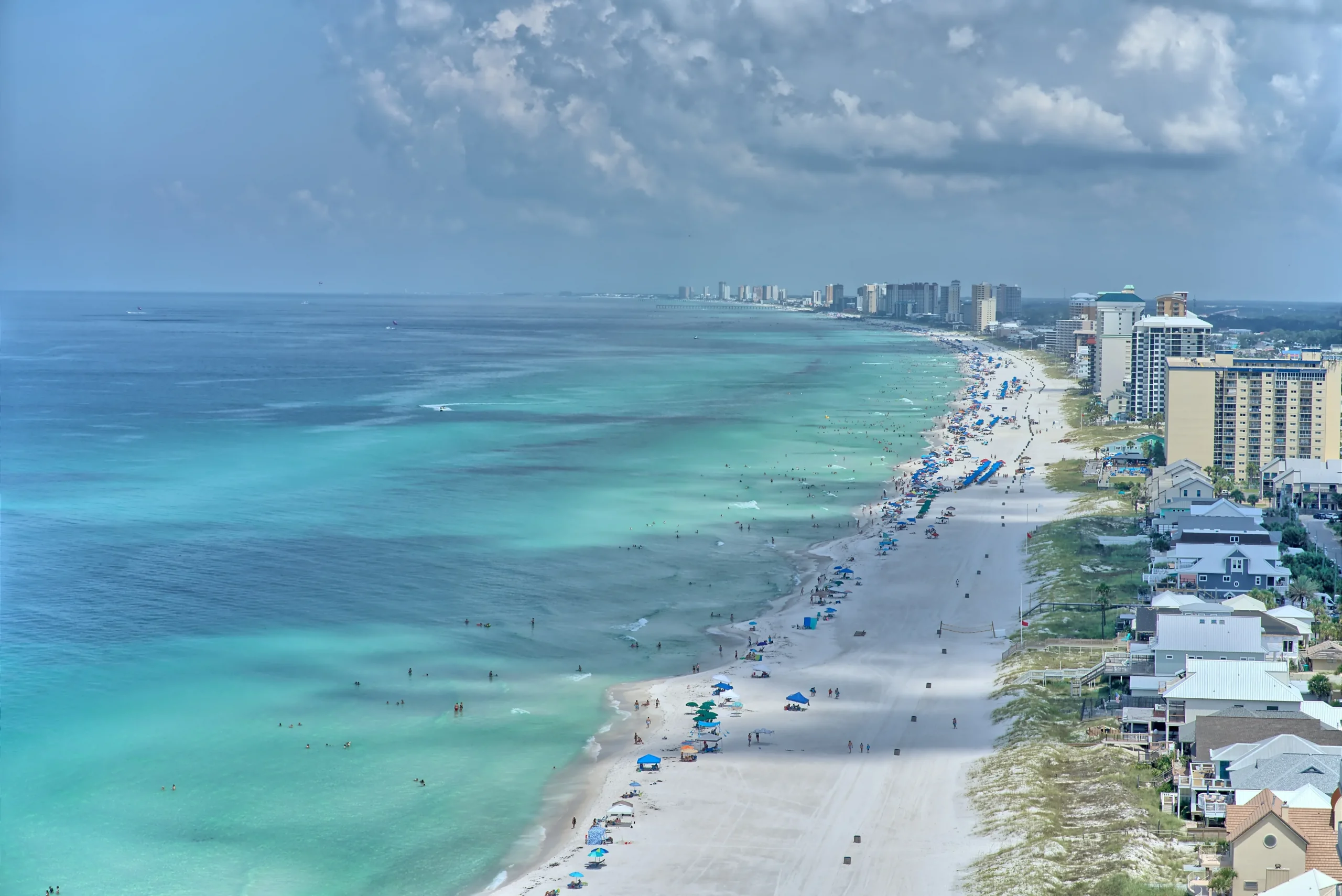The Pros And Cons Of Living In Florida’S Panhandle Region
With its prime beaches, low cost of living, and idyllic small towns, the Florida Panhandle offers an enticing lifestyle for many prospective residents. If you’re considering a move and want a quick take, major advantages include affordable housing, warm weather year-round, and natural beauty along the Gulf Coast. Downsides can include potential hurricane impacts, fewer amenities than big cities, and limited job opportunities.
In this comprehensive guide, we’ll dive into the pros and cons of living in Florida’s Panhandle region based on categories like climate, cost of living, housing, employment, lifestyle perks, and potential drawbacks. With detailed information on factors to weigh, you’ll get an in-depth look at what makes the Panhandle a great place to live for some and not for others.
The Panhandle’s Sunny, Warm Climate
The Florida Panhandle is well-known for its sunny and warm climate, making it an attractive destination for those who love basking in the sun and enjoying outdoor activities. The region experiences mostly clear skies year-round, providing residents with ample opportunities to soak up the sun and enjoy outdoor recreational activities such as swimming, hiking, and beachcombing.
The abundance of sunshine in the Panhandle is not only beneficial for outdoor enthusiasts but also for those who suffer from seasonal affective disorder (SAD), as exposure to sunlight can improve mood and overall well-being.
Mostly Clear Skies Year-Round
The Panhandle region of Florida enjoys mostly clear skies throughout the year. This means that residents can expect to see the sun shining for the majority of the days, creating a cheerful and vibrant atmosphere.
The clear skies also allow for stunning sunsets and starry nights, adding to the beauty of the area. Whether it’s a day at the beach, a hike in one of the many nature reserves, or simply enjoying a picnic in a local park, the clear skies in the Panhandle region provide the perfect backdrop for outdoor activities.
Long Summers and Short Winters
The Panhandle’s warm climate is characterized by long summers and short winters. Summers in the Panhandle are hot and humid, with temperatures often reaching the high 90s°F (32-37°C). This makes it an ideal destination for those who thrive in hot weather and enjoy spending time outdoors.
Winters in the Panhandle are mild, with temperatures rarely dipping below freezing. While snow is a rare occurrence in this region, residents can still experience cooler temperatures and occasional frost during the winter months.
Did you know? According to the National Weather Service, the Florida Panhandle receives an average of 320 days of sunshine per year, making it one of the sunniest regions in the United States.
The sunny and warm climate of the Panhandle region attracts many visitors and retirees who are looking for a place to escape the colder temperatures of the northern states. However, it’s important to note that the hot and humid summers can be challenging for some individuals, especially those who are not accustomed to such weather.
It’s essential to stay hydrated, wear sunscreen, and take necessary precautions to avoid heat-related illnesses during the summer months. Additionally, the lack of significant seasonal changes may be a drawback for those who enjoy experiencing distinct seasons throughout the year.
Affordable Cost of Living
Living in Florida’s Panhandle region offers numerous advantages, one of which is the affordable cost of living. Residents of this area enjoy lower housing prices compared to other parts of the state, making it an attractive option for those looking to purchase a home or rent an apartment.
Lower Housing Prices
One of the key benefits of living in the Panhandle region is the lower cost of housing. Whether you’re looking to buy a house or rent an apartment, you’ll find that prices are generally more affordable compared to other areas in Florida.
This allows residents to save money and have more disposable income for other expenses or investments.
According to a report by Zillow, the median home value in the Panhandle region is significantly lower compared to the state average. This means that residents can find housing options that fit their budget without compromising on quality or location.
Saving on Utilities, Goods and Services
In addition to lower housing prices, living in the Panhandle region also provides opportunities to save on utilities, goods, and services. The cost of living index in this area is generally lower compared to the state average, meaning residents can enjoy a higher standard of living for less.
Utilities such as electricity, water, and gas tend to be more affordable in this region compared to other parts of Florida. This can make a significant difference in monthly expenses, allowing residents to allocate their funds towards other areas of their life.
Moreover, goods and services, including groceries, dining out, and entertainment, are often more reasonably priced in the Panhandle region. This means that residents can enjoy a wide range of amenities and activities without breaking the bank.
Access to Outdoor Recreation
Living in Florida’s Panhandle region offers residents and visitors unparalleled access to a wide variety of outdoor recreational activities. Whether you are a beach lover or an avid hiker, this region has something for everyone.
Beaches Along the Gulf Coast
The Panhandle is famous for its stunning beaches along the Gulf Coast. With crystal-clear turquoise waters and powdery white sand, these beaches are a paradise for sunbathers, swimmers, and water sports enthusiasts.
Whether you prefer the popular beaches of Destin and Panama City Beach or the more secluded stretches of coastline in places like Cape San Blas or St. George Island, you’ll find plenty of opportunities to relax and soak up the sun.
According to Visit Florida, the state’s official tourism website, the Panhandle region is home to some of the best beaches in the state. In fact, several of these beaches have been recognized as top beach destinations in the country.
If you enjoy water activities such as swimming, snorkeling, fishing, or boating, the Gulf Coast beaches offer endless opportunities for fun and adventure.
State Parks and Wilderness Areas
In addition to its beautiful beaches, the Panhandle region is also known for its abundance of state parks and wilderness areas. These protected areas offer a chance to explore Florida’s natural beauty and diverse ecosystems.
For nature lovers, a visit to places like the Apalachicola National Forest or the Blackwater River State Park is a must. These parks provide opportunities for hiking, camping, birdwatching, and wildlife spotting.
You might even catch a glimpse of the endangered Florida panther or the elusive red-cockaded woodpecker.
| Pros | Cons |
|---|---|
|
|
Living in the Panhandle region of Florida provides easy access to a wealth of outdoor recreational opportunities. From relaxing on the beautiful beaches to exploring the state parks and wilderness areas, there is no shortage of things to do and see.
However, it’s important to consider the potential drawbacks, such as the risk of hurricanes and the high humidity during the summer months. Overall, if you love outdoor activities and appreciate the natural beauty of the Gulf Coast, living in the Panhandle can be a dream come true.
Potential Hurricanes and Storms
Projected Increases in Hurricane Activity
Living in Florida’s Panhandle region means being prepared for potential hurricanes and storms. The Panhandle is located in a region that is highly susceptible to hurricanes due to its proximity to the Gulf of Mexico.
According to the National Oceanic and Atmospheric Administration (NOAA), the Atlantic hurricane season is expected to become more active in the coming years.
Climate change is projected to increase the frequency and intensity of hurricanes, which could have a significant impact on the Panhandle region. The warmer ocean temperatures in the Gulf of Mexico provide the fuel needed for hurricanes to form and strengthen.
This means that residents of the Panhandle must be vigilant and prepared for the possibility of a hurricane making landfall in their area.
It is important for residents in the Panhandle to stay informed about hurricane activity and have a plan in place for evacuation or sheltering in place. The NOAA and the National Hurricane Center provide up-to-date information and resources to help residents prepare for hurricane season.
Storm Surge and Inland Flooding Risks
In addition to the potential for hurricanes, the Panhandle region is also at risk for storm surge and inland flooding. Storm surge occurs when a hurricane pushes a large amount of water onto the land, causing coastal flooding.
The Panhandle’s low-lying coastal areas are particularly vulnerable to storm surge.
Inland flooding is another concern for residents of the Panhandle. Heavy rain associated with hurricanes can lead to flash flooding in low-lying areas and along rivers and streams. This can cause significant damage to homes, infrastructure, and the environment.
It is crucial for residents to understand their flood risk and take appropriate measures to protect themselves and their property. The Federal Emergency Management Agency (FEMA) provides flood maps and resources to help residents determine their flood risk and take steps to mitigate it.
While the potential for hurricanes and storms in the Panhandle can be daunting, it is important to remember that there are measures in place to help residents prepare and respond to these events. By staying informed, having a plan, and taking appropriate precautions, residents can navigate the challenges and enjoy the many benefits of living in Florida’s Panhandle region.
Fewer Job Opportunities
Living in Florida’s Panhandle region can come with some challenges, and one of them is the limited job opportunities compared to other areas in the state. While the Panhandle offers a unique and beautiful environment, it is important to consider the job market before making a decision to relocate.
Service Industry and Tourism Jobs
The Panhandle region heavily relies on the service industry and tourism sector for job opportunities. With its pristine beaches, vibrant coastal towns, and numerous attractions, the area attracts a significant number of tourists each year.
This influx of visitors creates job openings in hotels, restaurants, retail stores, and other hospitality-related businesses. However, it’s important to note that these jobs may be seasonal and offer limited career growth.
Additionally, the competition for these positions can be high, especially during peak tourist seasons.
Digital Work Opportunities
While the Panhandle may have fewer traditional job opportunities, the rise of technology has opened up new avenues for remote work. Many individuals are now able to work from the comfort of their homes, regardless of their location.
This means that residents of the Panhandle can take advantage of digital work opportunities such as freelance writing, graphic design, programming, and online consulting. These types of jobs offer flexibility and the ability to work remotely, which can be a great advantage for those living in the Panhandle.
According to a study conducted by the Bureau of Labor Statistics, the number of remote workers has been steadily increasing over the years. This trend is expected to continue, providing more opportunities for individuals in areas with limited job markets.
| Pros | Cons |
|---|---|
| Flexibility: Remote work allows for a flexible schedule and the ability to work from anywhere. | Limited career growth: Service industry jobs may offer limited opportunities for advancement. |
| Work-life balance: Remote work can provide a better work-life balance, allowing individuals to spend more time with family or pursue personal interests. | Seasonal nature of jobs: Some jobs in the service industry may only be available during peak tourist seasons, leading to income fluctuations. |
| Increased job opportunities: Remote work opens up opportunities in various fields, regardless of geographical location. | Competition: Competition for service industry and tourism jobs can be high, especially in popular tourist destinations. |
Ultimately, the decision to live in the Panhandle should consider not only the job market but also other factors such as lifestyle preferences, cost of living, and proximity to family and friends. It’s important to weigh the pros and cons to make an informed decision that aligns with individual goals and aspirations.
Conclusion
While the Florida Panhandle offers an idyllic lifestyle for many with its warm climate, natural beauty and low cost of living, there are some potential downsides to consider like hurricane risk and limited amenities.
Weighing your priorities along with the pros and cons detailed here can help determine if the Panhandle’s charms are worth the trade-offs. With an informed look at all it has to offer, you can decide if this region is the right fit to align with your lifestyle.








